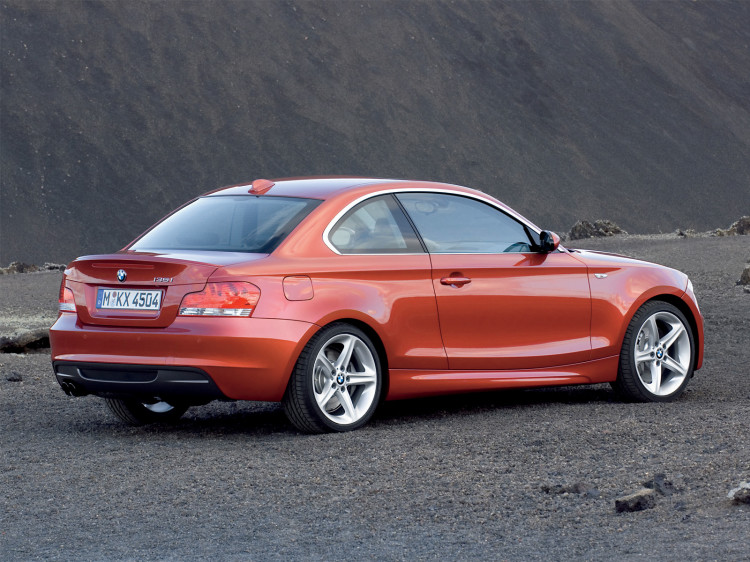The aged amateur racers were all in their places, coffee at hand, and mostly wide awake. The question was posed, “when will we see the first serious professional race driver that has not learned to drive a car with a manual transmission”.
Once the guffaws and harrumphs settled, the conclusion was that it won’t be long. It is what it is – manual transmission take rates have plunged world wide (thanks to clever automatic transmissions – looking at you ZF). And, of course, electric vehicles with their ultra wide torque bands, which obviate the need for more than a single forward speed, are the future.
That dystopian future has been further unveiled with the onset of self-driving technologies, the digital realm that will spell the end of, as told in Chuck Berry’s classic, “No Particular Place to Go”. The analog car is dying . . . if not dead. It’s almost as if there is a dread for our electric future.
The BMW 135i Coupe
I like to think that the BMW 135i I own is a (mostly) analog car. Yes the brakes are boosted and overseen by ABS software, it employs ‘throttle by wire’, and the electronic nannies are in control at the ragged edges (usually, when the TIM-YOYO DSC button hasn’t been pushed a couple of times – “That’s It Man, You’re On Your Own”, a classic phrase cleaned up from 1Addicts). But it makes all the right noises, it forces me to think about what gear I need to be in, and the steering feedback – complete with the ‘noise and chatter’ that is filtered from most electrically assisted racks – is a delight. That being said, any BMW since the 1980s is anything but an ‘analog’ car.
The last time I drove a truly analog car occurred almost a quarter of a century ago. It was a stock early 1930s Ford Model A. No assisted steering and mechanical brakes (not hydraulic – but literally brake by wire, of the steel cable variety). It had a three speed unsynchronized gearbox with non-assisted clutch. That car was stunningly analog – heck it even had bio-mechanical turn signals (you had to stick your arm out the window).
That Model A was a pain in the rear end to drive, double clutching up and down without practice is not fun; the brakes, which had not been adjusted recently, were immune from stopping with anything resembling alacrity. Fortunately the steering wasn’t too terrible, the ratio was not quick nor was the feel engaging, but it did what it was asked to. Driving that Model A made me appreciate how far the automotive arts have come.
When you stop to think about analog vs digital for automotive systems, it becomes apparent that digital has a lot going for it. Anyone who’s fiddled with jetting and syncing multi carburetor setups knows that electronic fuel injection is a winner. So analog loses that battle. And ABS brakes – and the enabling software – are far better than the old ‘brake by wire’ or even analog hydraulic brakes.
Muscle Cars Are Not Always Fun
When ‘boomers’ lament the demise of muscle cars – often when describing the mid-’60s as ‘the golden age of performance’, many of those lamenting have no real clue as to how one dimensional those cars were – they accelerated. They were heavy, had lousy brakes, and all of the cornering capabilities of an overloaded beer wagon. And that heady acceleration is misleading; they accelerated well compared to their contemporaries, but not nearly as well as the current crop of performance cars. Heck even Hyundai makes a sedan that’ll eat an early ‘70s Hemi’s lunch.
Surprisingly though with the digitization of automobile control systems hotrodding hasn’t disappeared. Tuners, both internal – like M, or AMG – and aftermarket flourish. And BMW’s are hot rodded with amazing results (the N54 tunes being a shining example of pushing the edge of the envelope). Even electric cars are being ‘tuned’ – the in-house performance add on for a Tesla Model 3 long range being just one example.
So, when you distill driving to the A, B, Cs – acceleration, braking, cornering – driving can be satisfying by electric propulsion just as well as by internal combustion engine.
However, I will still cock a good ear towards a snarling exhaust note, a well timed shift going around a corner, the squeal of tires as another gear slams home at speed – these will remain a part of me even when they are gone (at least they’ll still be available on YouTube for a while).
BMW’s Future is Bright
As long as we are engaged as drivers, the future for BMW is bright – they know how to make engaging drivers’ cars – ICE or electric. The crystal ball grows dark about BMW’s future, however, when fully autonomous cars come to market and the urge to ‘drive’ withers.
The 150 years or so of driving automobiles will be seen as an outlier in history even though it has had a tremendous impact on society, especially in the United States. Some time in the not-so-distant future, the skills required to drive an automobile well will certainly be seen as something extremely unusual given truly autonomous driving.
With that lament out of the way, video from the 2022 Goodwood Festival of Speed, showing the McMurtry Spéirling obliterating the hill climb record, proved to be an intravenous shot of espresso – I’m now wide awake and looking forward to a brave new world!







































































